Shoukouwa
The Height of Edomae-style Sushi in Singapore
Renowned for its authentic Edomae-style sushi, Shoukouwa is a Japanese restaurant that emphasizes precision, seasonality, and the freshest Japanese ingredients, flown in from Tokyo’s Toyosu Market four times a week.
Shoukouwa was opened in 2016 by Belgian-born chef Emmanuel Stroobant and located immediately beside his signature French restaurant, Saint Pierre. From its inception, it aimed to deliver a world-class Edomae sushi experience, focusing on traditional techniques and the finest seasonal ingredients. Just four months after opening, Shoukouwa became the first and only Japanese restaurant in Singapore to earn two Michelin stars in the 2016 Michelin Guide Singapore, an accolade it has retained annually. In 2018, the restaurant partnered with master sushi chef Junya Kudo of Hokkaido’s two-Michelin-starred Sushi Ikko to enhance its culinary standards through intensive training and consultancy, further elevating its offerings.
Shoukouwa is run by Executive Chef Kazumine Nishida, born in Kansai, Japan, who has been at the helm of Shoukouwa since October 2019, following his role as sous chef starting in 2016. With over 20 years of culinary experience, Chef Nishida is a master itamae known for his meticulous technique and dedication to perfection. His philosophy emphasizes respect for ingredients, viewing food as a source of life, and he strives to elevate the craft of sushi daily. Chef Nishida’s signature dishes showcase his ability to enhance subtle flavors through skillful preparation. He works closely with Chef Stroobant to mentor the next generation of chefs, particularly at Shoukouwa Shinjidai, a sister restaurant blending Japanese kaiseki with French techniques. Nishida’s hands are his “most valuable tool,” and he describes his sushi-making as a “dance” of precision, transferring his passion directly to diners.
The main entrance opens into a foyer made to look like a traditional Japanese stone garden before leading into an intimate six seat sushi counter. Chef Nishida was finishing the preparation of the mise en place while the diners filed in. There are exactly two dinner seatings per night at 6pm and 8:15pm, each lasting two hours.
As the chef was preparing and skillfully presenting each dish, the restaurant manager explained the ingredients, sourcing, any interesting techniques or unique preparations used for the dish. He brought out cards explaining each ingredient and how they thought about combining them together.
The appetizer was an interactive experience, with a sweet and tangy vinegar bubble presented on top of a lotus leaf. We were told to use one hand to slowly pull the lotus leaf and let the bubble of sauce drop into the appetizer below, containing pieces of tiger prawn, bafun uni, lotus leaf shoots (jyunsai) and rock seaweed. Hits of sweetness from the lightly poached shrimp, a hit of tangy from the vinegar sauce and richness from the uni. Delicious.
The next dish was presented with a homemade soy sauce, extremely clear and light but just as flavourful as the more traditional darker variety as well as the filleted carcass of the fish, showing where each cut was taken from.
The dish was two cuts of sashimi from a Hokkaido flounder, a chewier, denser muscular cut and a more traditional piece. We were told to use wasabi and soy for the first cut, while trying wasabi and salt for the second. Really neat contrast of textures from the same fish.
Following on was an appetizer made from hairy crab, edamame beans in a crab roe sauce topped with beluga caviar. Nothing to say here other than delicious - the only improvement I could think of is a larger serving!
Next was a really neat dish - a smoked tuna loin seared with charcoal on all four edges, but otherwise left rare and topped with a dollop of seaweed soy paste. Almost bacon like, the charcoal searing left a bit of a bitter smokiness cutting through some of the fattiness of the tuna loin.
The next dish was a traditional one that I remember fondly from Sushi Shikon. A lightly poached abalone served with a abalone liver sauce. As the restaurant manager explained, the sauce itself is a combination of the abalone liver, white miso for umami and uni for a bit of richness, and each chef adjusts the proportions slightly into their own signature combination. The abalone was incredibly tender and I would argue that it was done better than Shikon!
Another Hokkaido specialty, a very light dashi broth with okra, gingko nuts, corn and Kinki fish. Deceptively light and clear, the soup hides a depth of flavour and hit of umami.
Moving into the main event, the nigiri dishes, we started with lighter white fish - a baby seabream, lightly scored to enhance the texture.
Next came a princess trout, aged for 2 weeks inhouse with soft, almost mushy flesh. This one was served with a bit of ginger to add a bit of kick.
An unique nigiri I have never tried before, a mince of Swordtip squid, lightly salt-cured and pressed into a Shizo leaf and topped with yuzu juice. I usually avoid squid nigiri as the chewiness makes it difficult to eat. The chef mitigated the usual chewiness by chopping the squid into a rough mince and insisting that he serve it straight into our hands, so the loose mince doesn’t break up. It’s the first time I’ve ever seen this preparation and an absolute highlight of the meal.
Next came a nigiri made from Pomfret butterfish with a sweet ponzu jelly on top - reminding me of a British quince paste. Personally, I’m not a huge fan of this fish - I tend to find it a bit dry and chalky, but it was very well executed.
Next, a black throat sea perch, served with a extra hit of wasabi to cut through the oiliness of the fish. There was a little pickled plum added to leave a hint of sweetness at the end of the bite.
Moving from the lighter fish to the more fatty, hearty fish, we move to the chutoro, or medium fatty tuna. Surprisingly, there was a bit of crunch from some pickled daikon radish, adding a bit of sweet and sour to the fatty tuna belly. Unique preparation, and a really good one.
My highlight of the night delivered straight into my hand, the otoro - the fattiest piece of the tuna belly, seared on the top with charcoal just before serving and oozing with juicy fattiness. I’m usually not a fan of chutoro and otoro cuts, but trying this time charcoal seared and smoky, was a totally different experience. Absolutely amazing.
Another omakase classic, the uni roll, with two kinds of uni - both from the Yoichi area of Hokkaido. Rich, decadent with a sharp kick of wasabi at the end.
Another really unique take on the tuna mince roll. Usually, I’m not a fan, but the chef added pickled leeks and radish to add a bit of flavour and crunch. keeping the mince wrapped in a shizo leaf to prevent the seaweed from getting soggy. Another big hit!
Finally, the last piece of nigiri, and large scallop with a thick sweetened soy sauce. A bit of an odd pairing, I usually see that sort of sauce on a tempura or something with a bit of crisp. Also an odd choice as the final piece of nigiri - usually the progression is from lighter to heavier flavours and finish off with a palate cleanser and dessert. Scallop, as a milder, sweet flavour is usually served much earlier in the menu. In a normal menu, I would’ve expected it either directly before or after the squid. Good nonethless.
To finish off the meal, the traditional thimble of miso soup, and a single Japanese tomato. Apparently, it’s not a grape tomato, but a Japanese “fruit tomato” with double the sugar content of regular tomatoes, and approaching the levels of watermelons or strawberries.
The traditional light fluffy egg castella, a type of sponge cake adapted from Portuguese settlers, but almost always presented at the end of a omakase meal.
Finally, Japanese Kyoho grapes and Japanese musk melon, both intensely sweet and characteristic of the intense focus put into sourcing and importing the best Japanese produce.
Dinner finished, the chef prepared herbal burdock root tea. The chef brought out a giant glass display with 6 kinds of dried and fresh herbs, poured simmering water through and distilled a warming tea to finish the meal.
Overall, this has been the single best sushi experience I’ve had in a very long time. Part dining, part entertainment, the intense precision and skill of the sushi chef combined with the ongoing commentary and conversation with the manager as each dish was presented - explaining each ingredient, its sourcing, any unique details about the preparation and where they differed from traditional technique to put their own unique twist on the cuisine. Lots of play away from strictly traditional adding textures, or layering flavours to bring their own variation of a very traditional omakase preparation, and executed extremely well. A must repeat and a contender for the best meals I’ve had this year.
Total Damage: 860 SGD/person


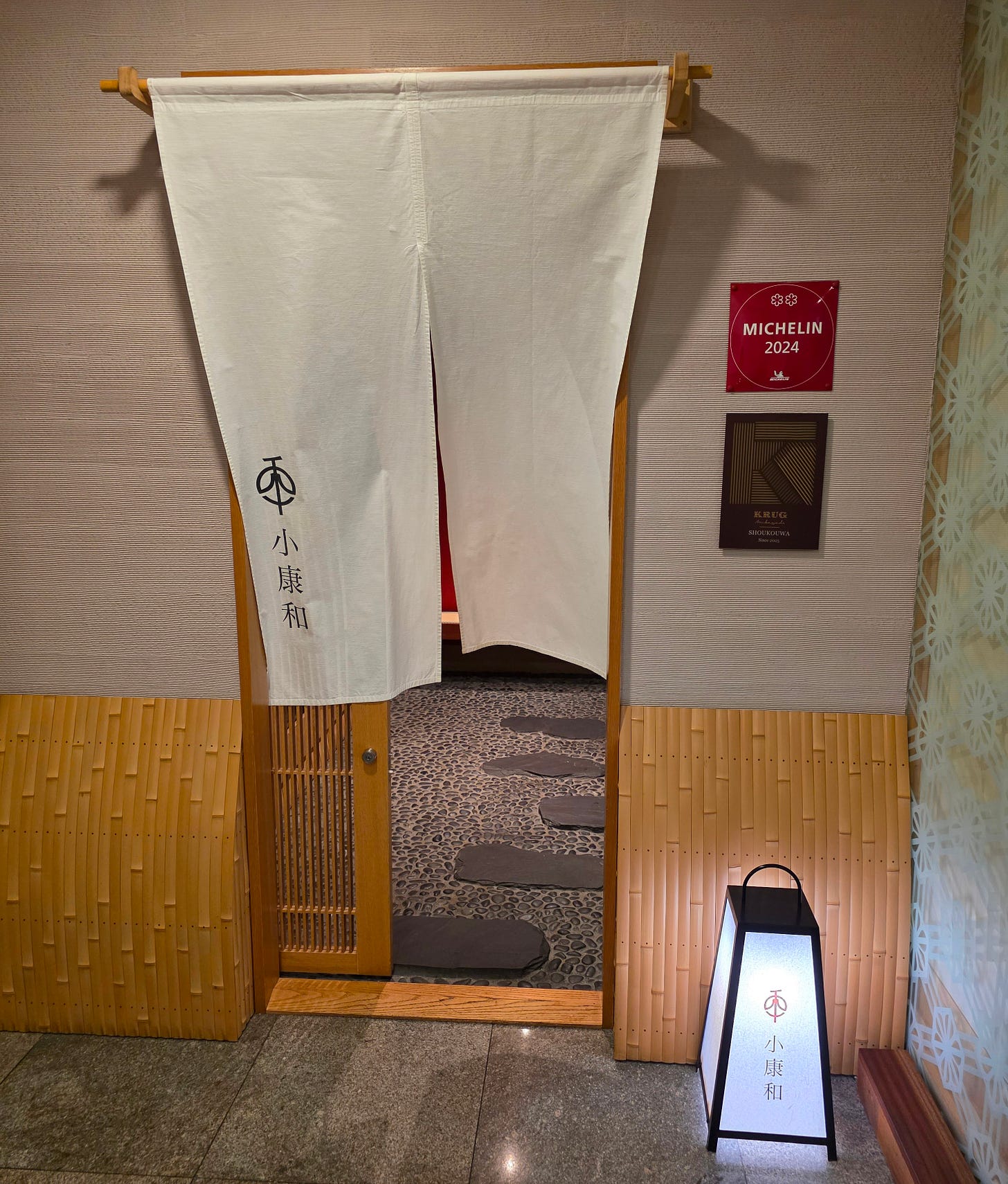
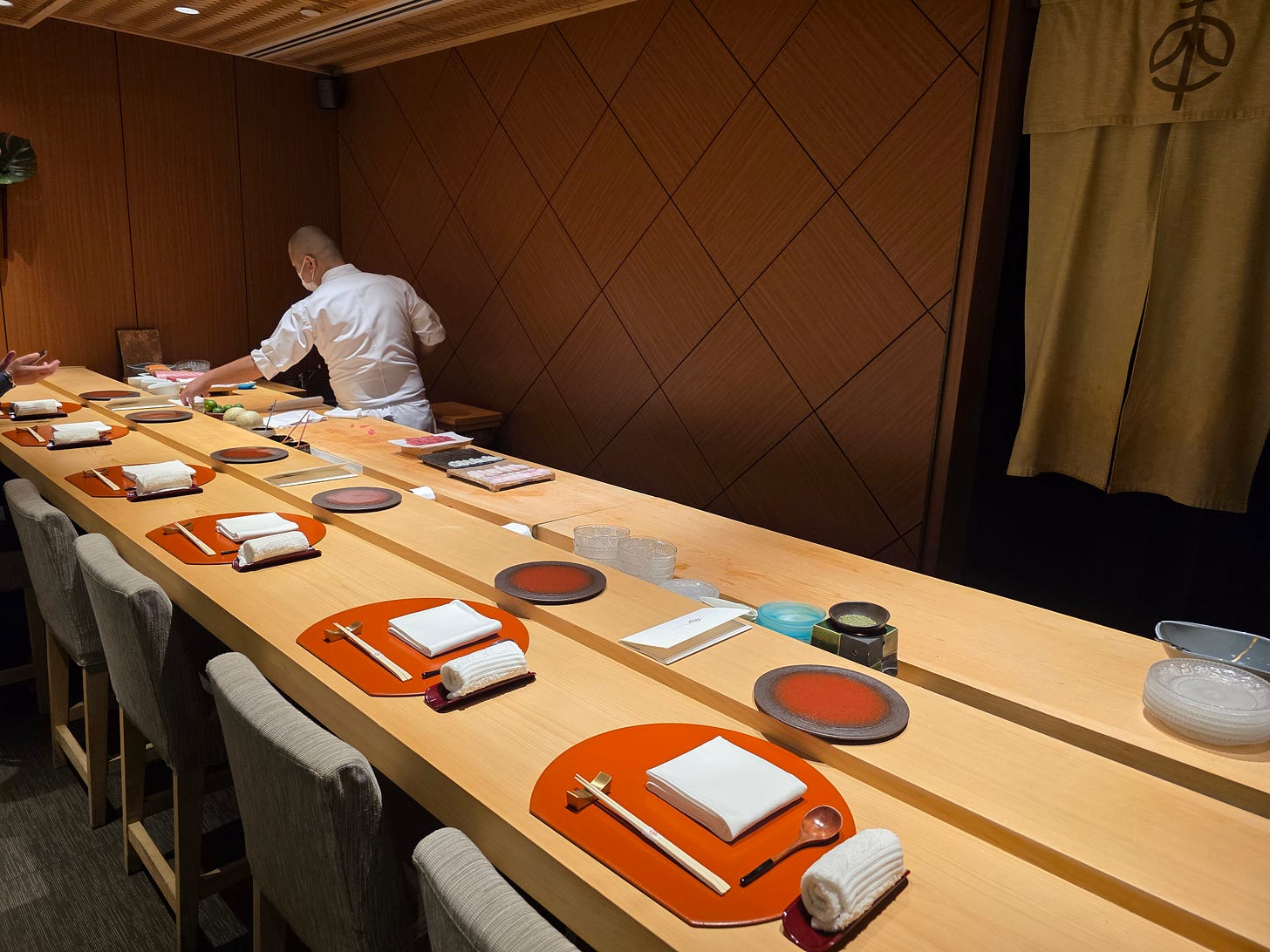
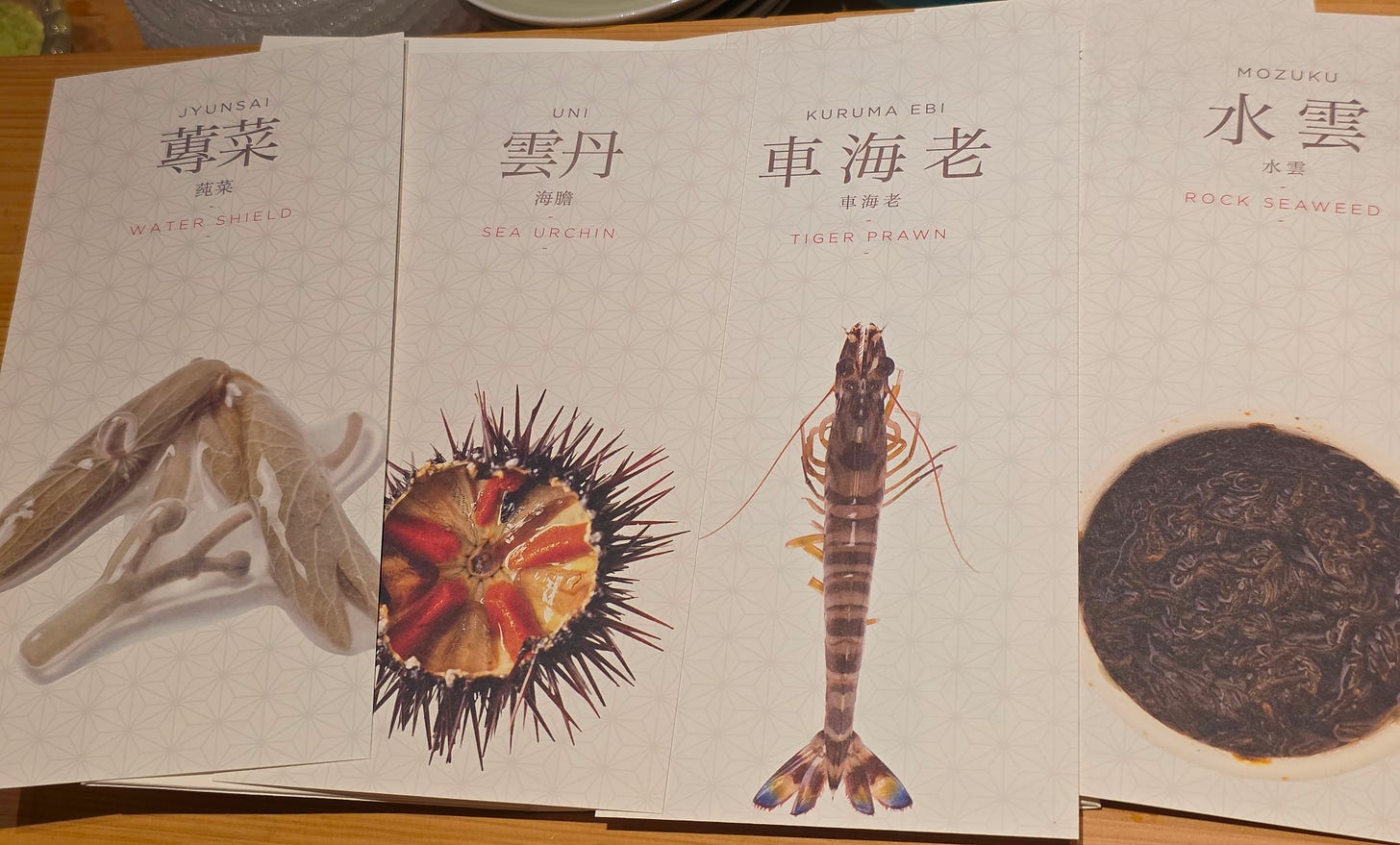
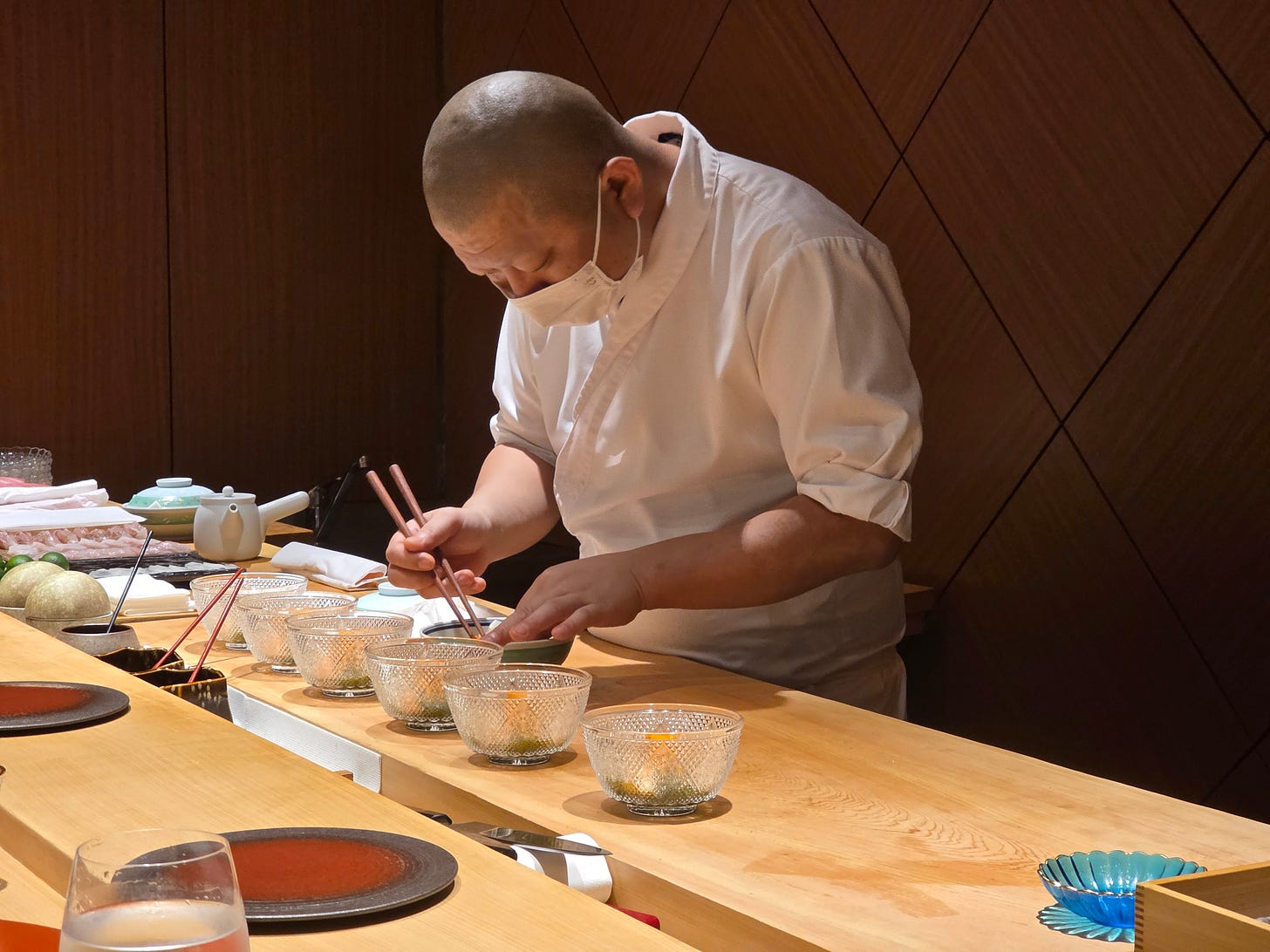
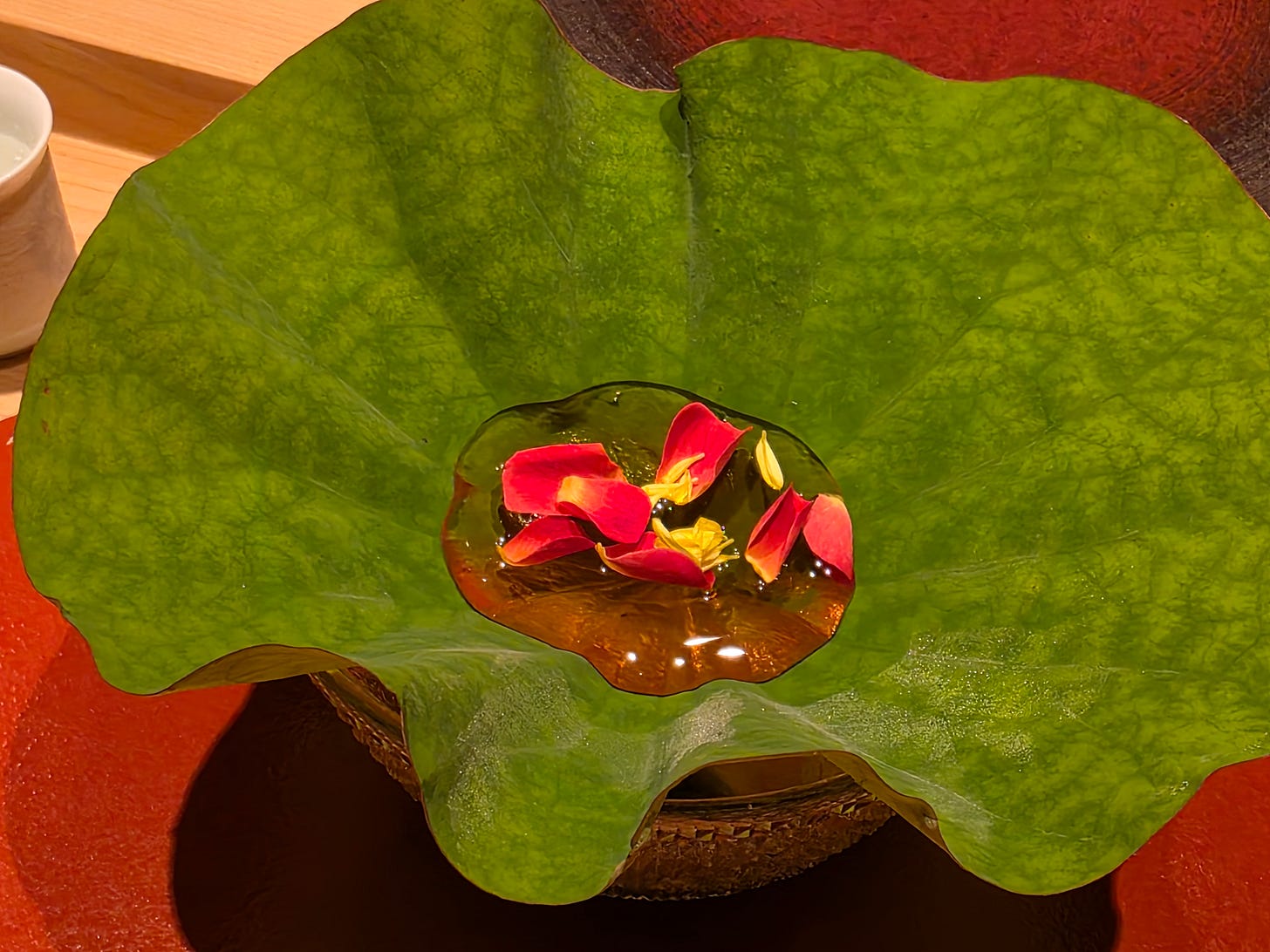

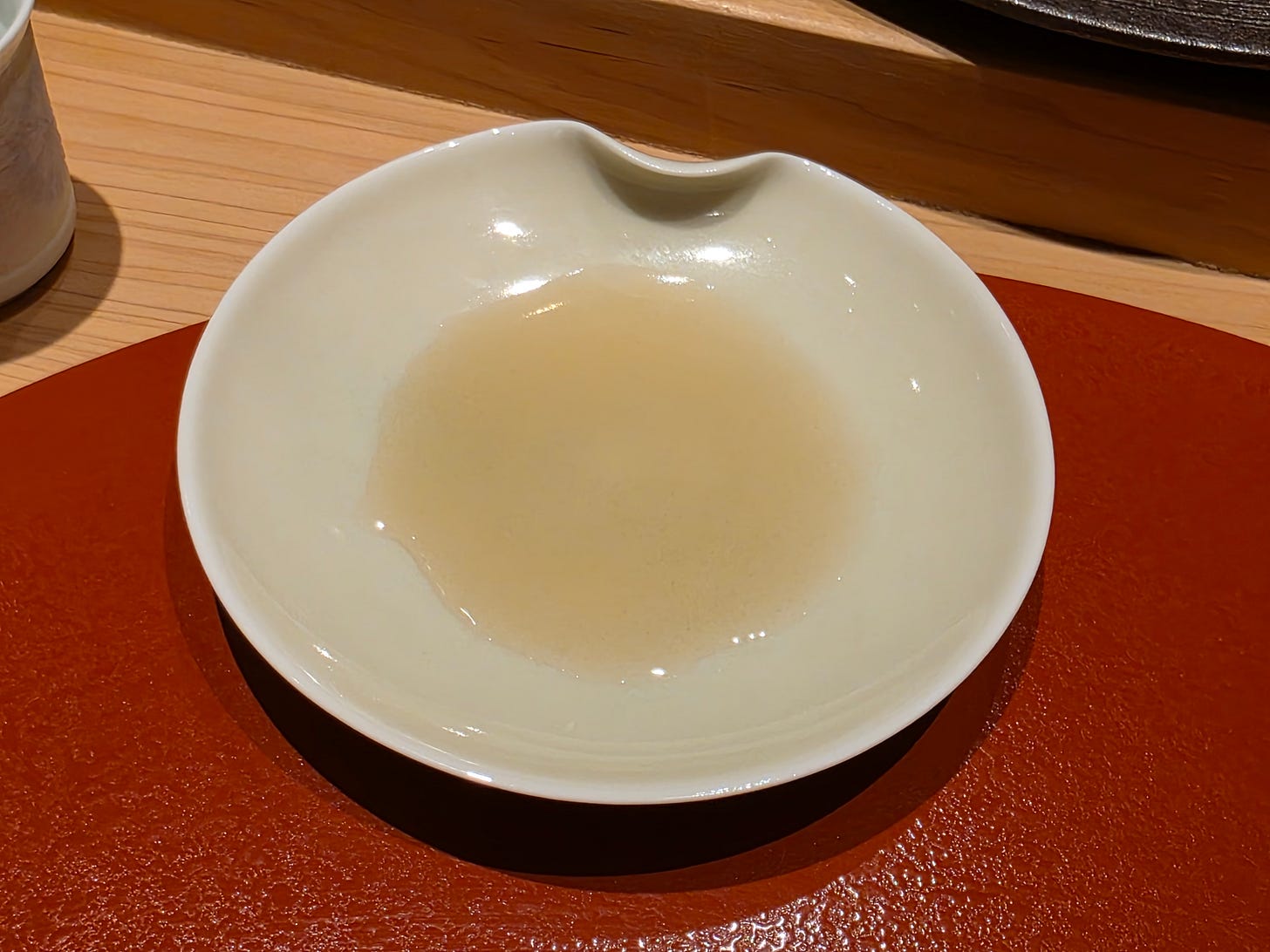
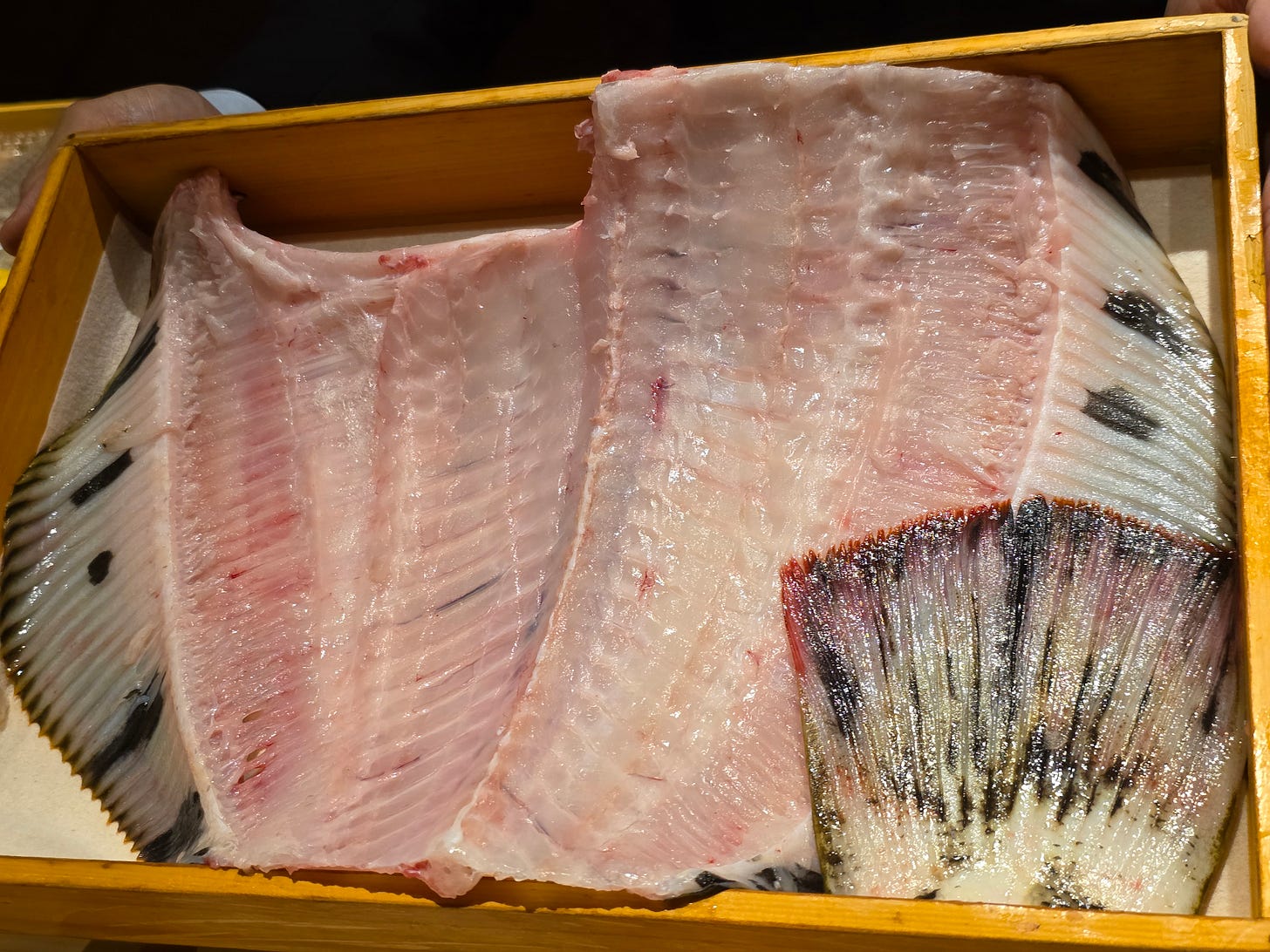
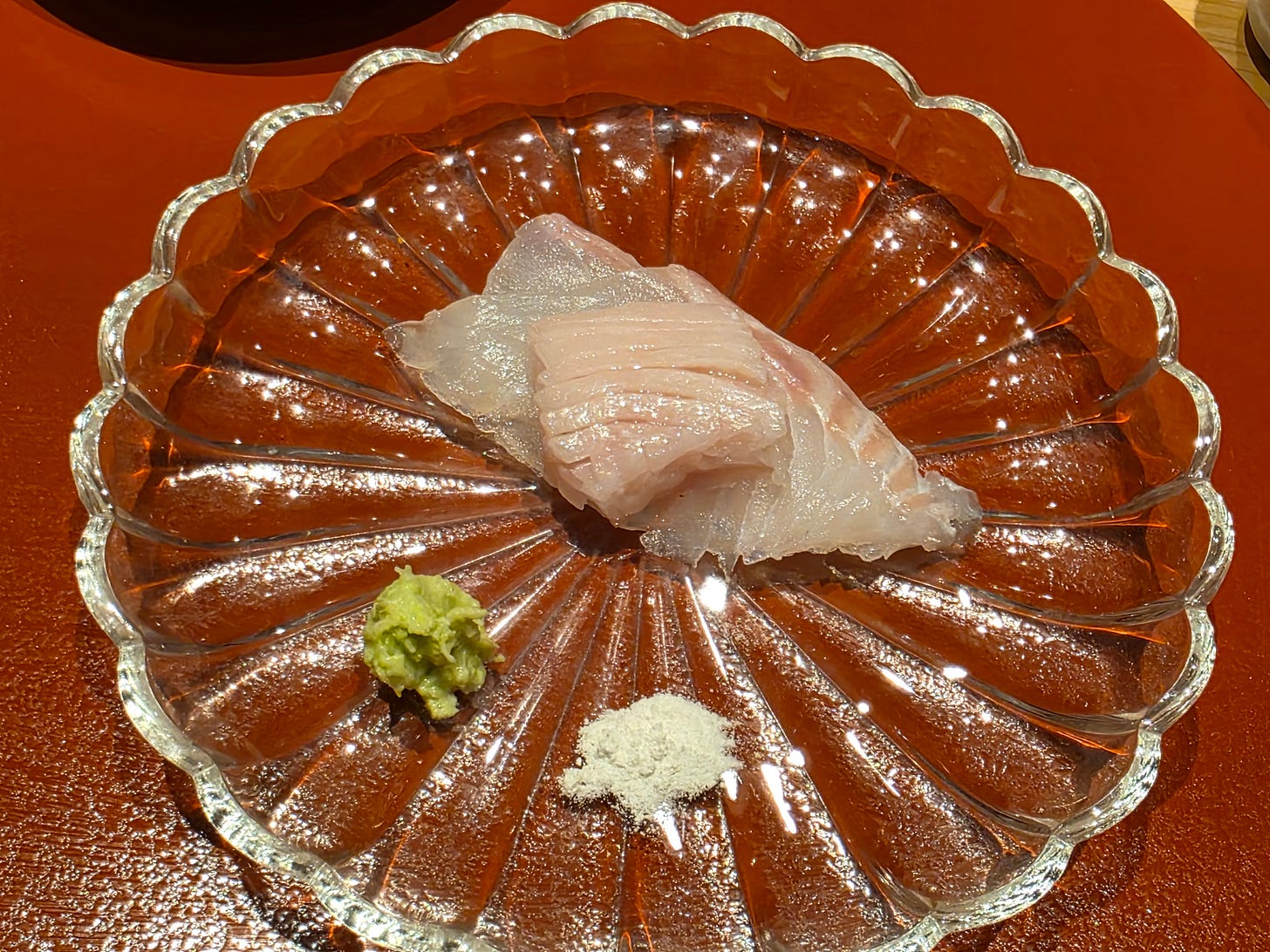
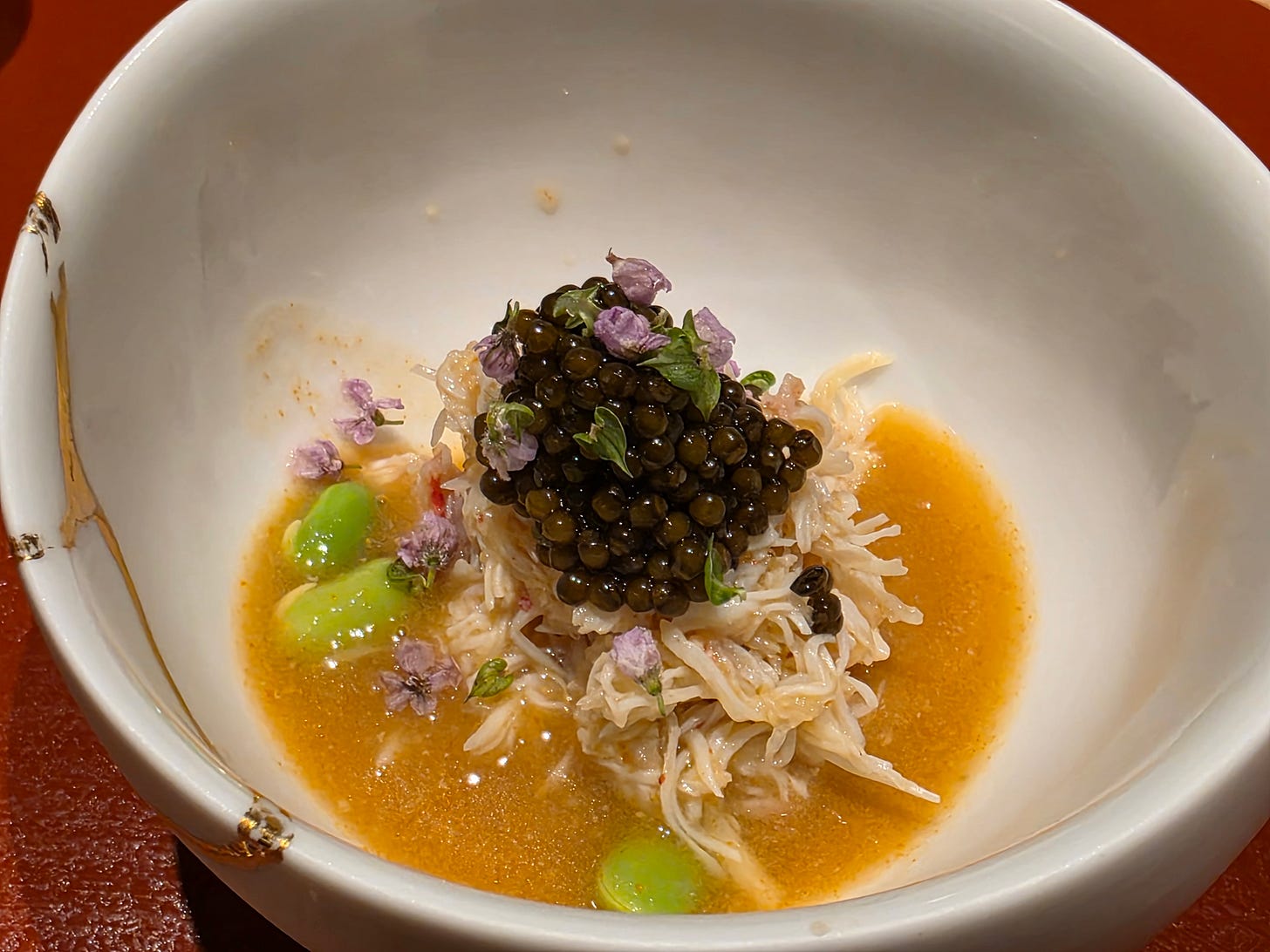
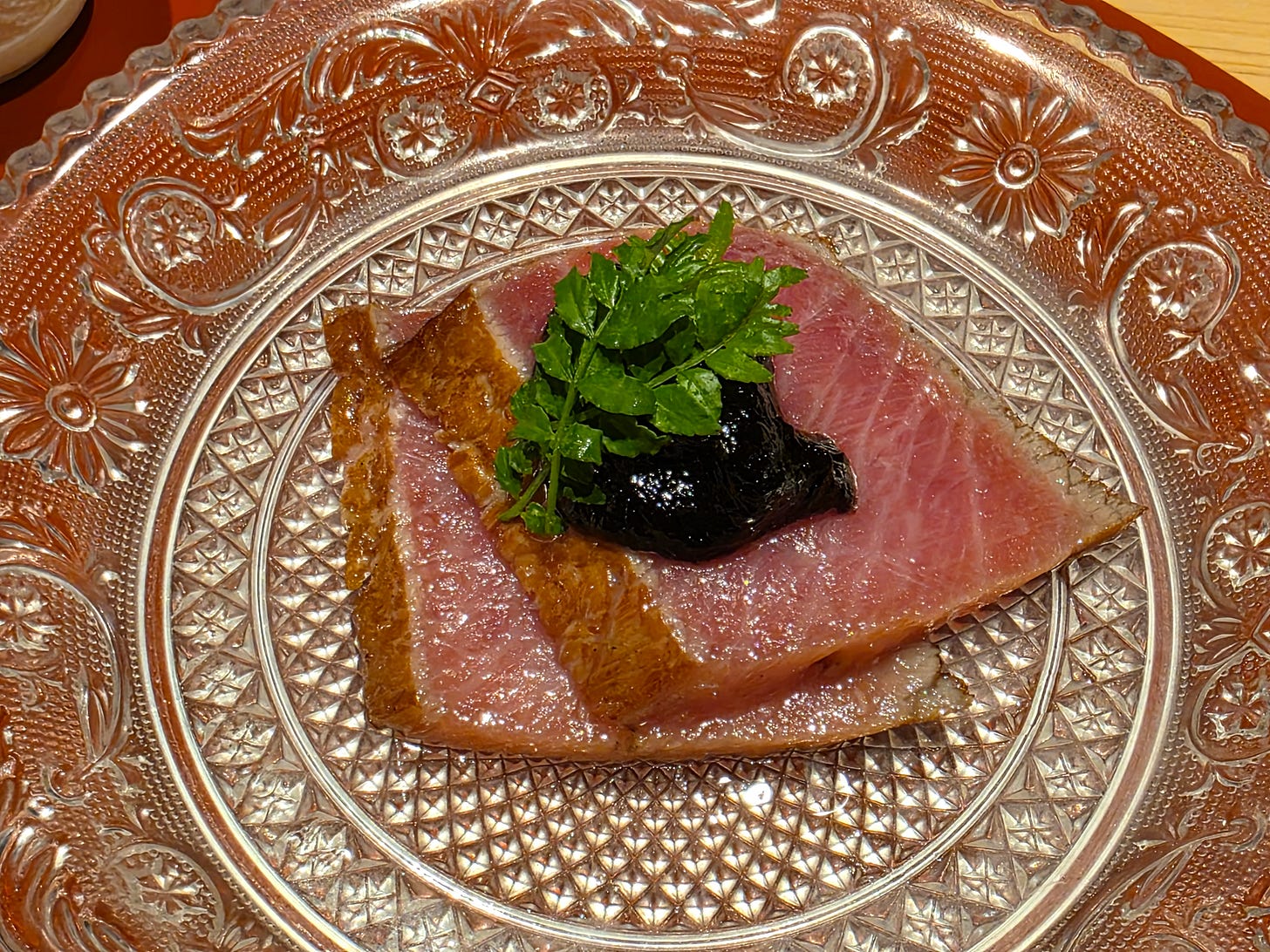

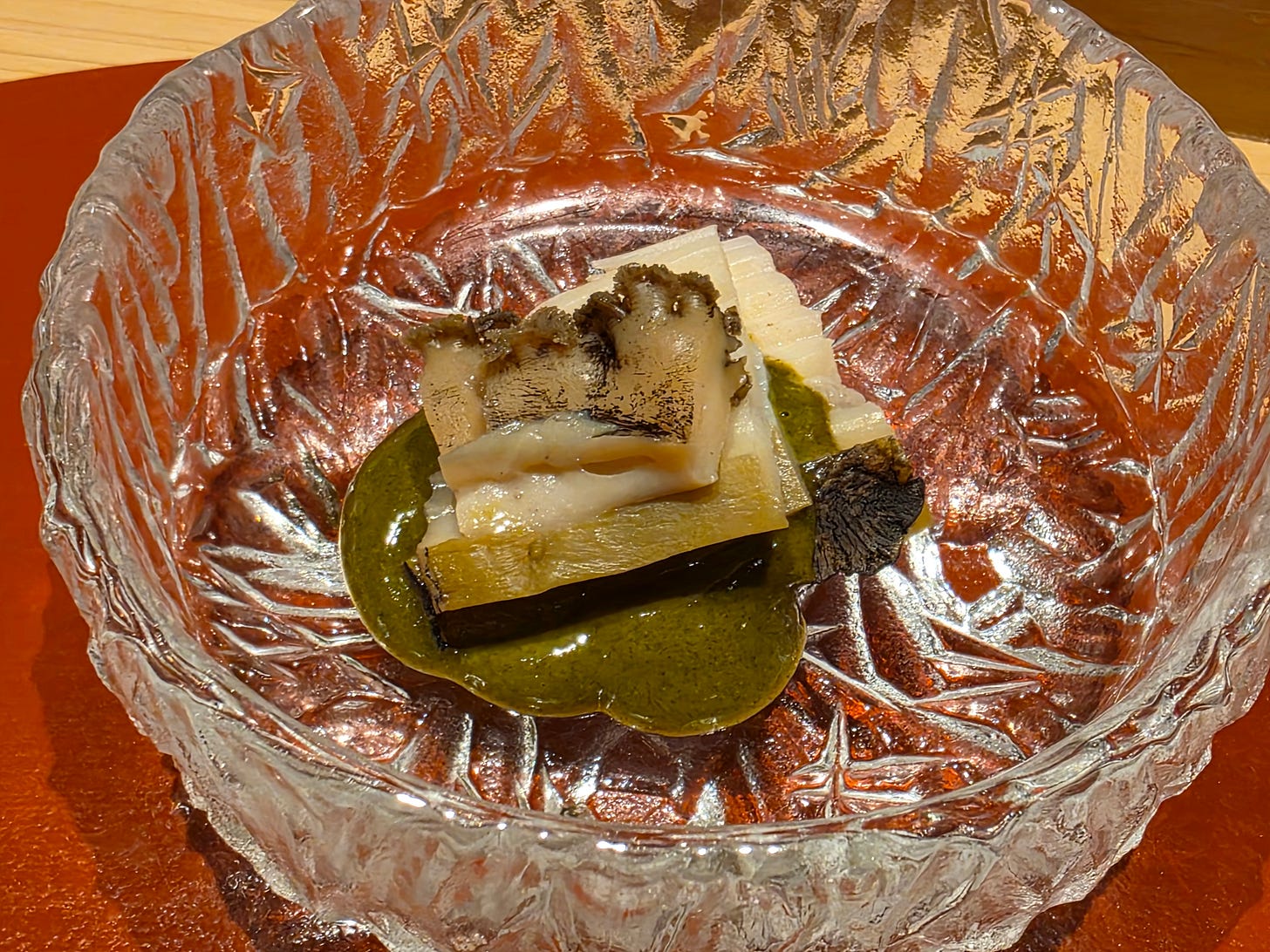
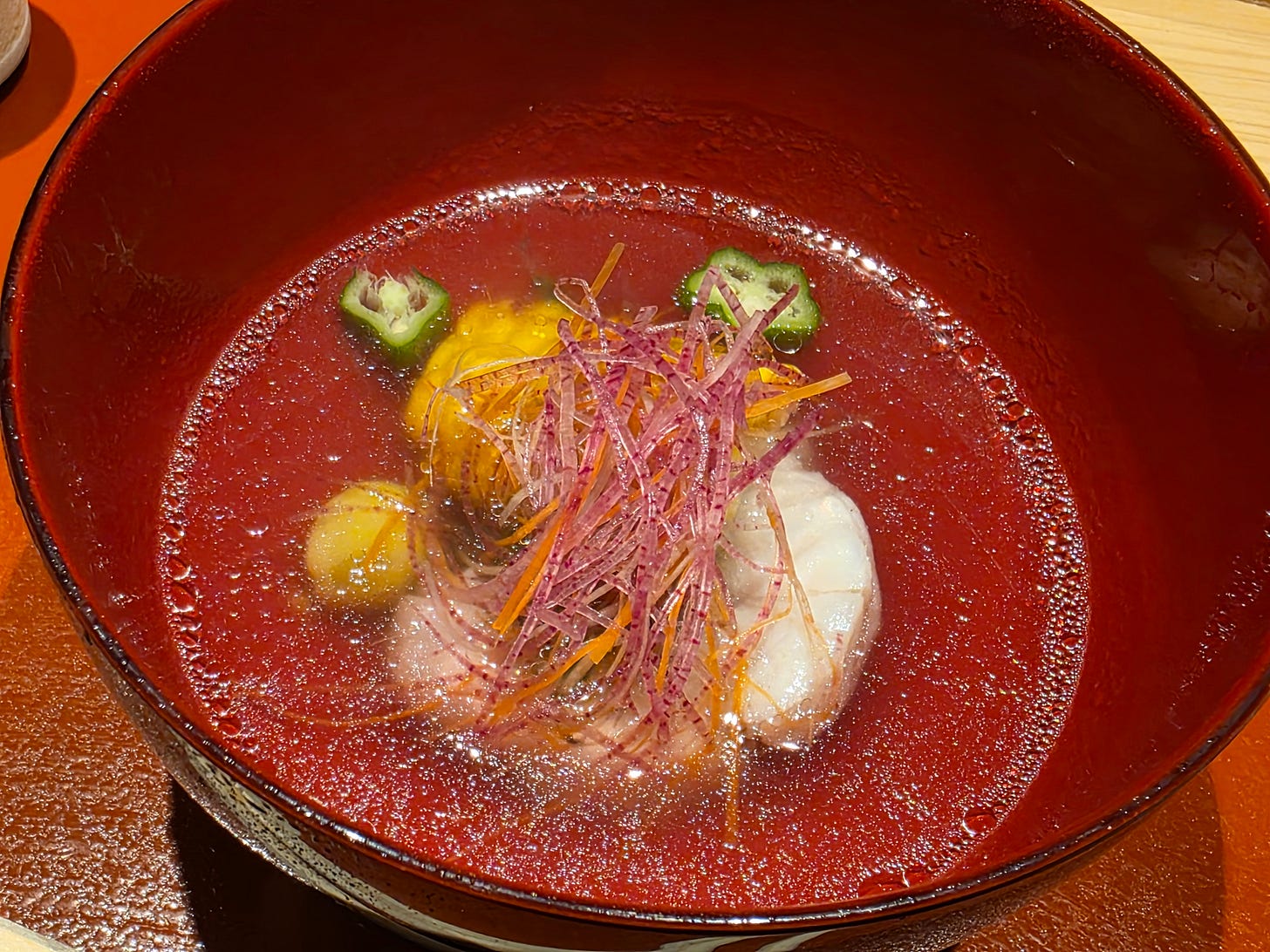
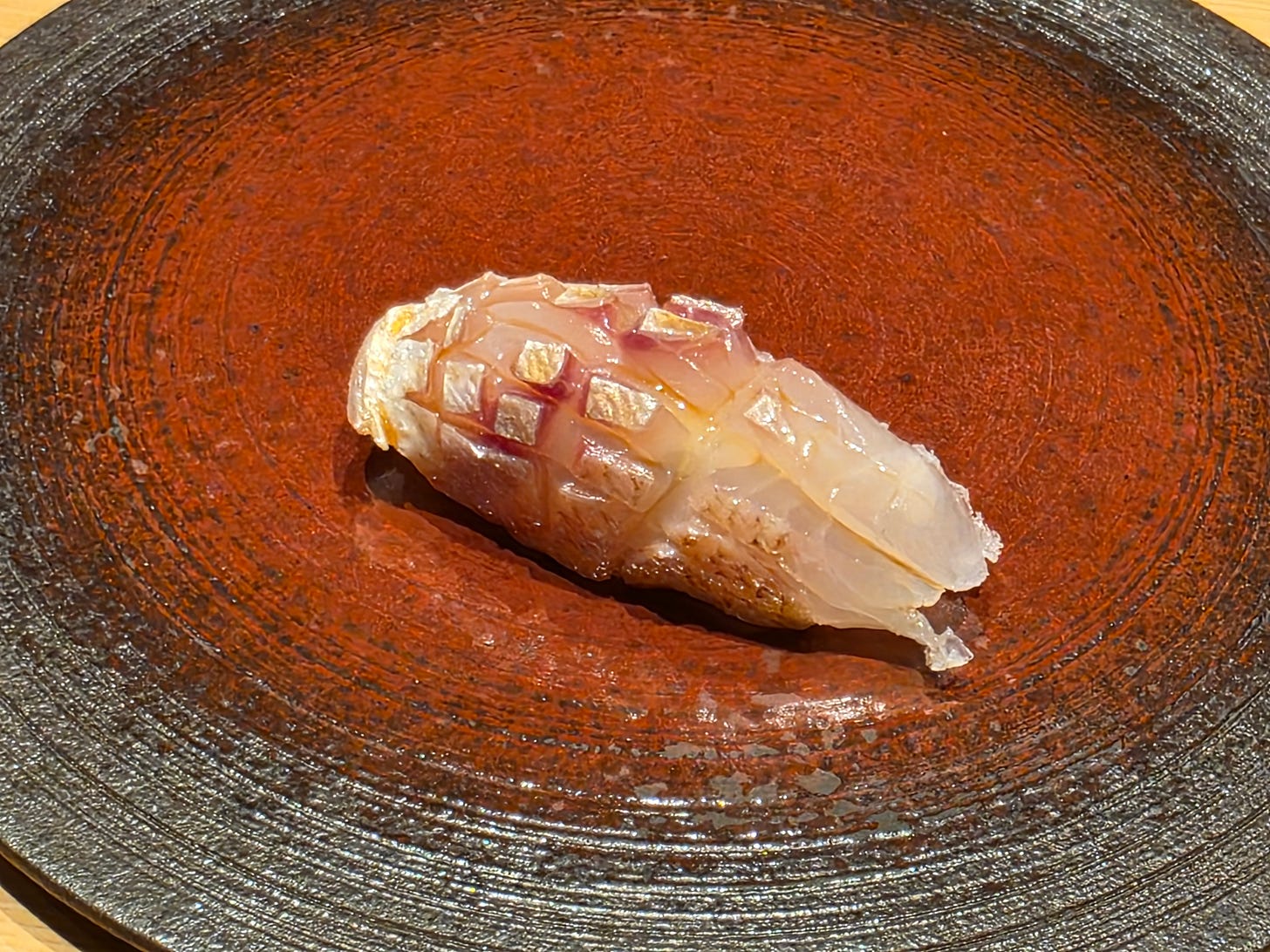
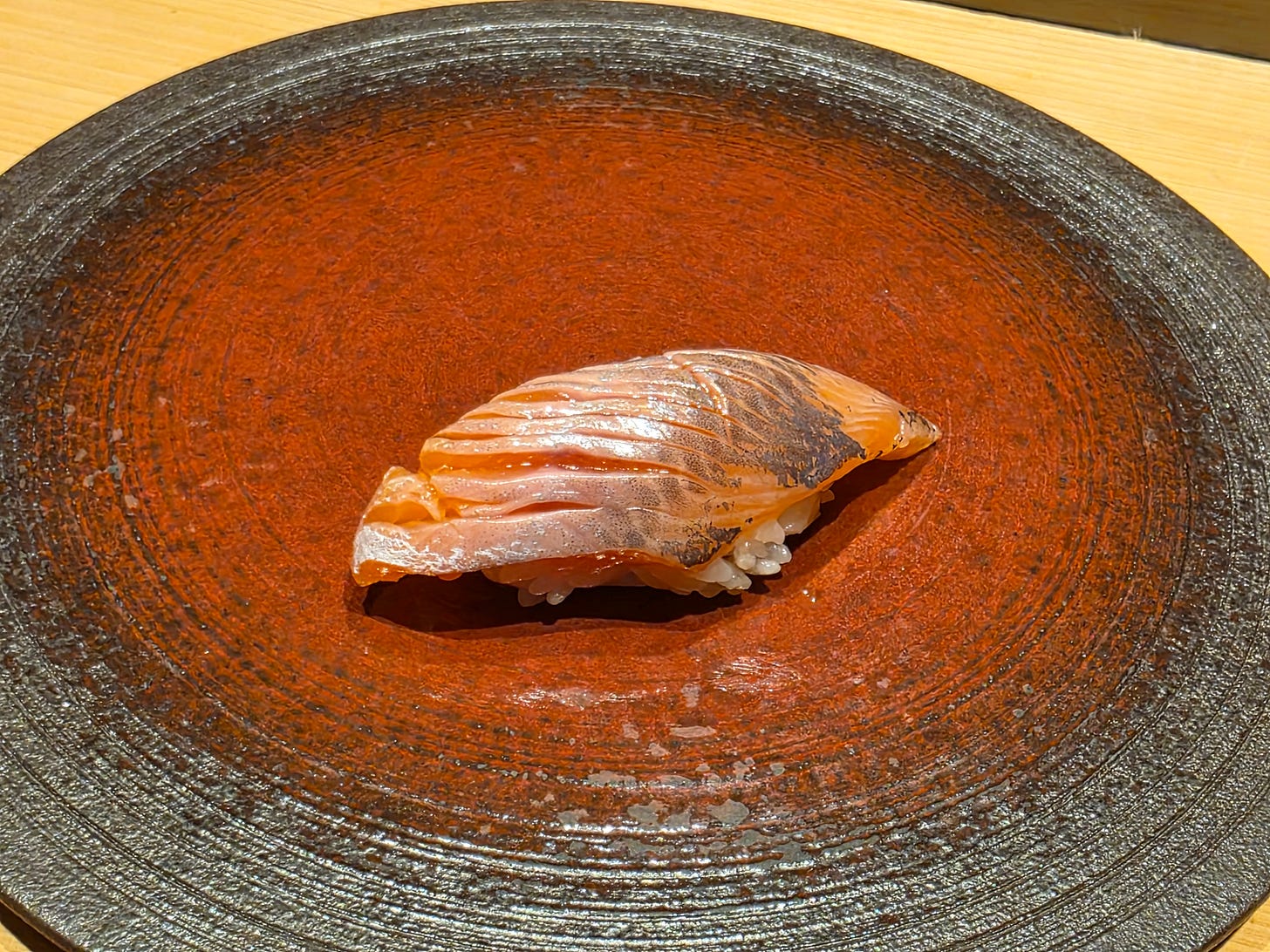



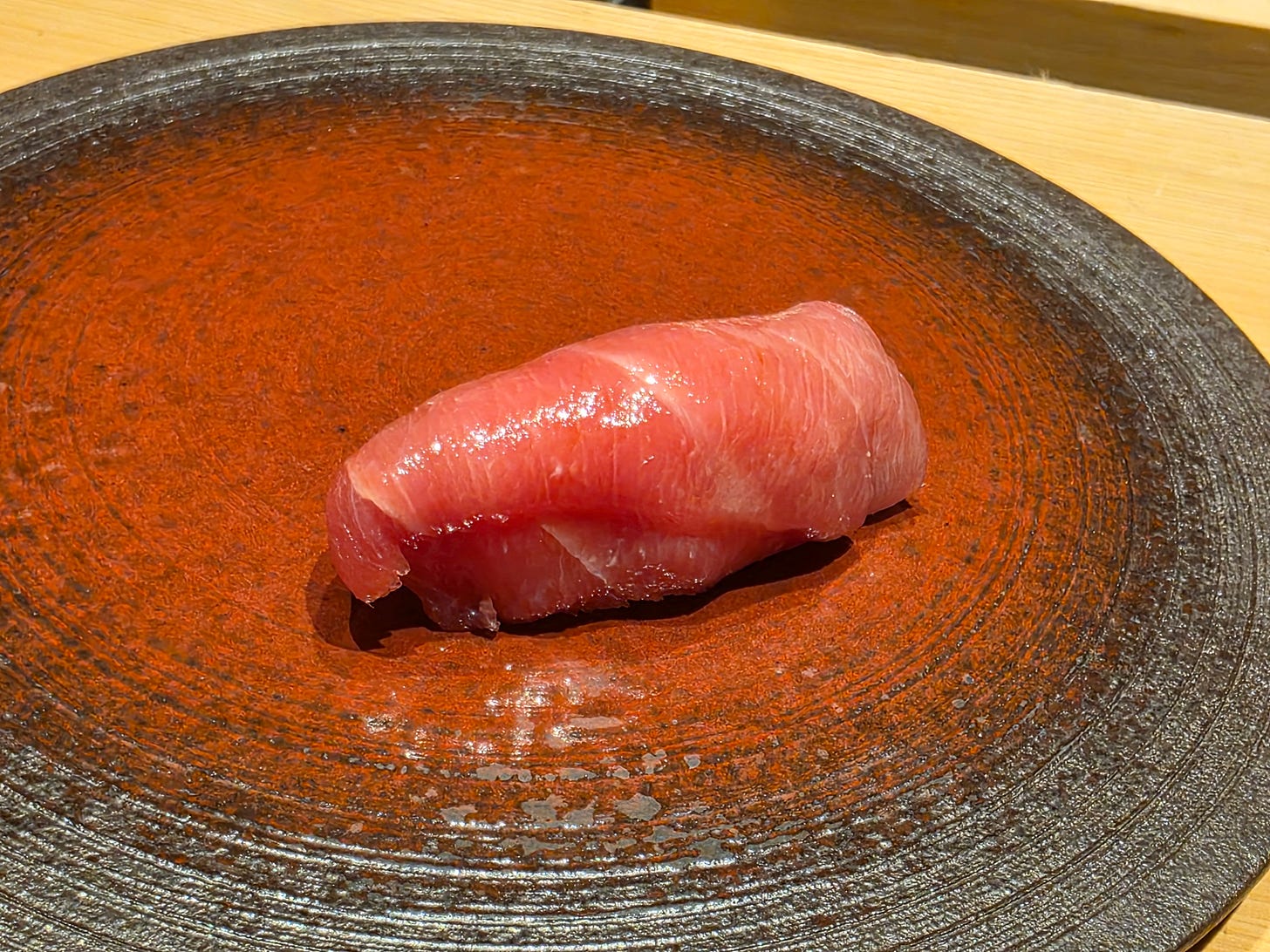
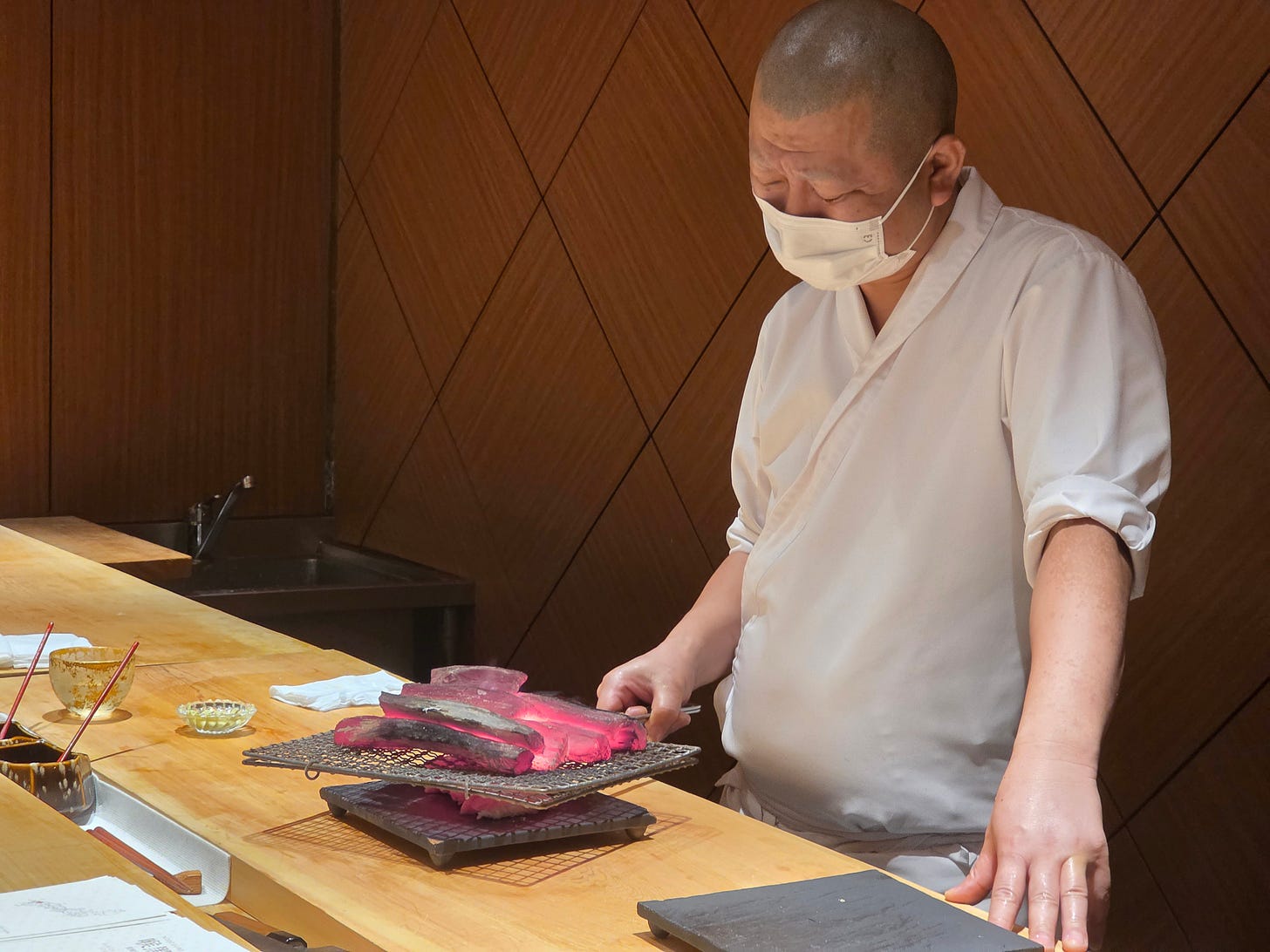
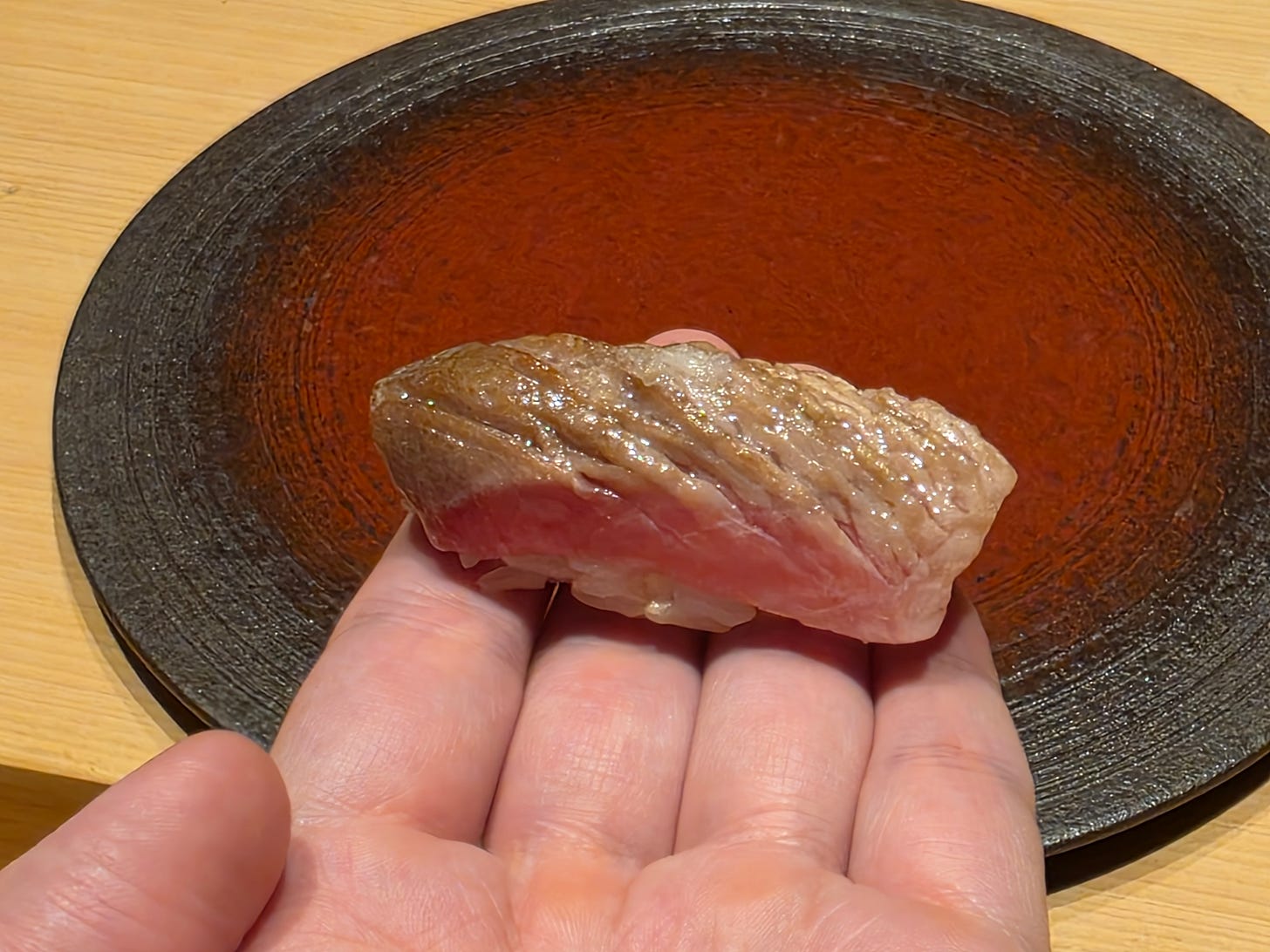
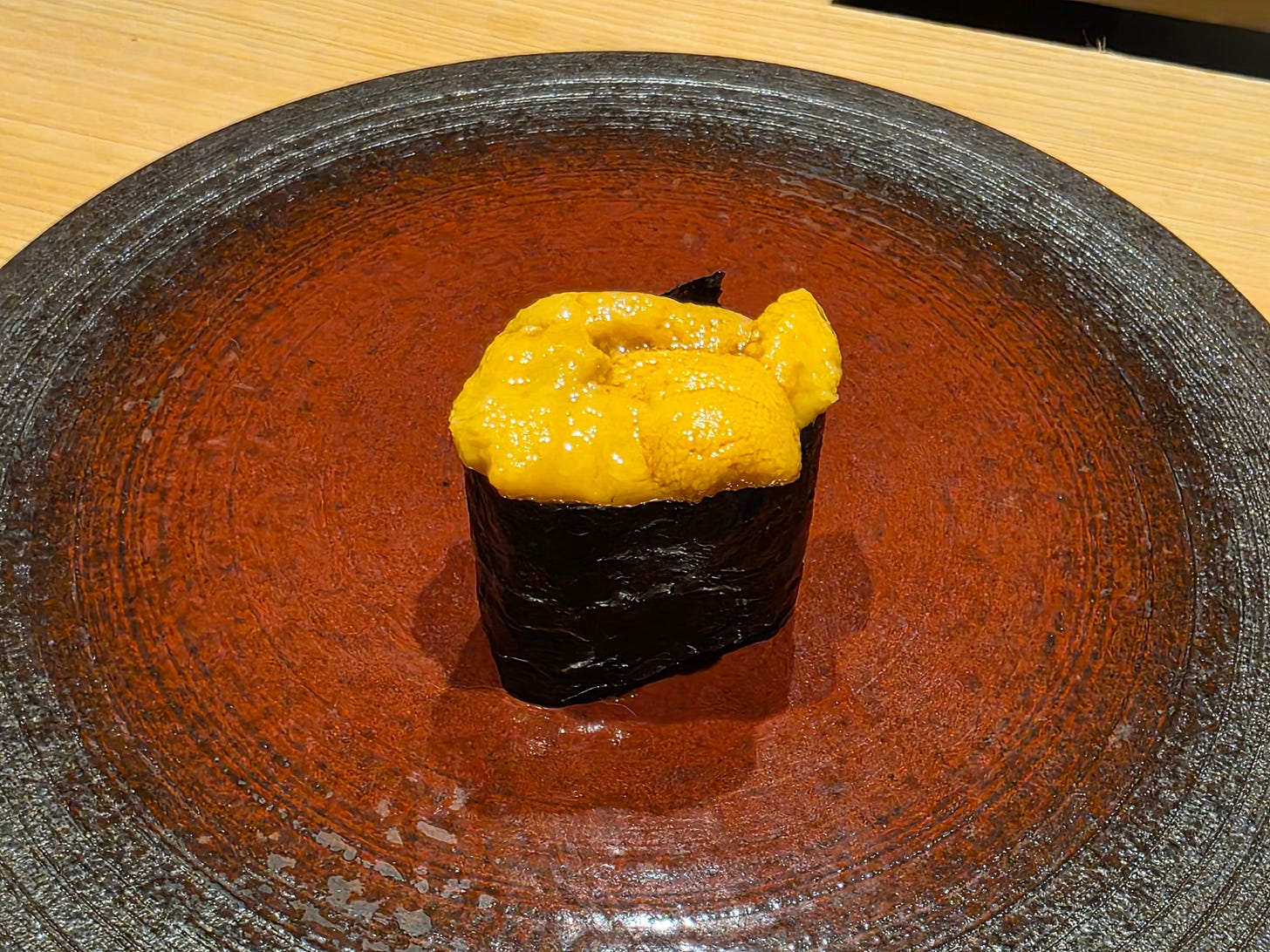
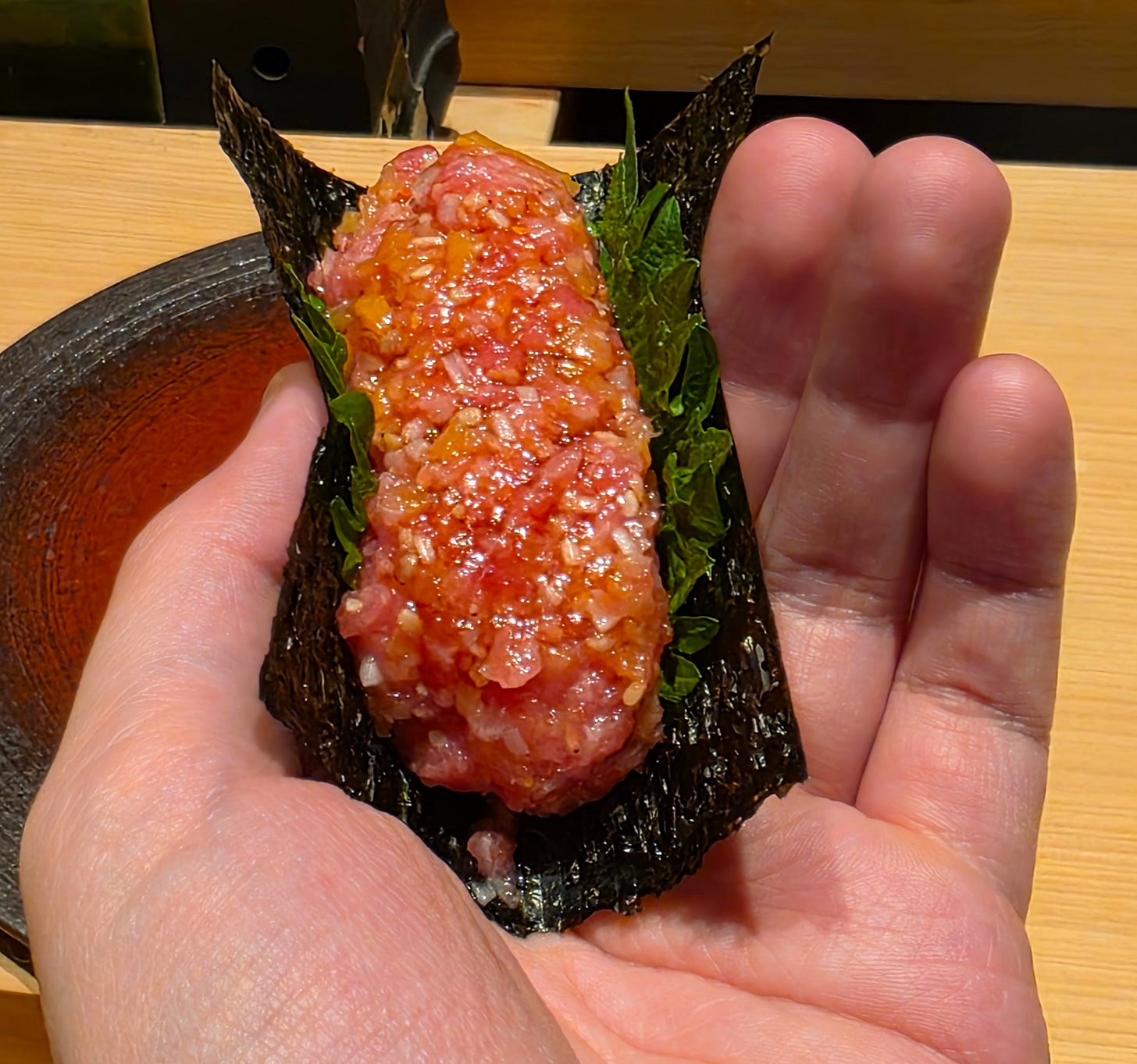
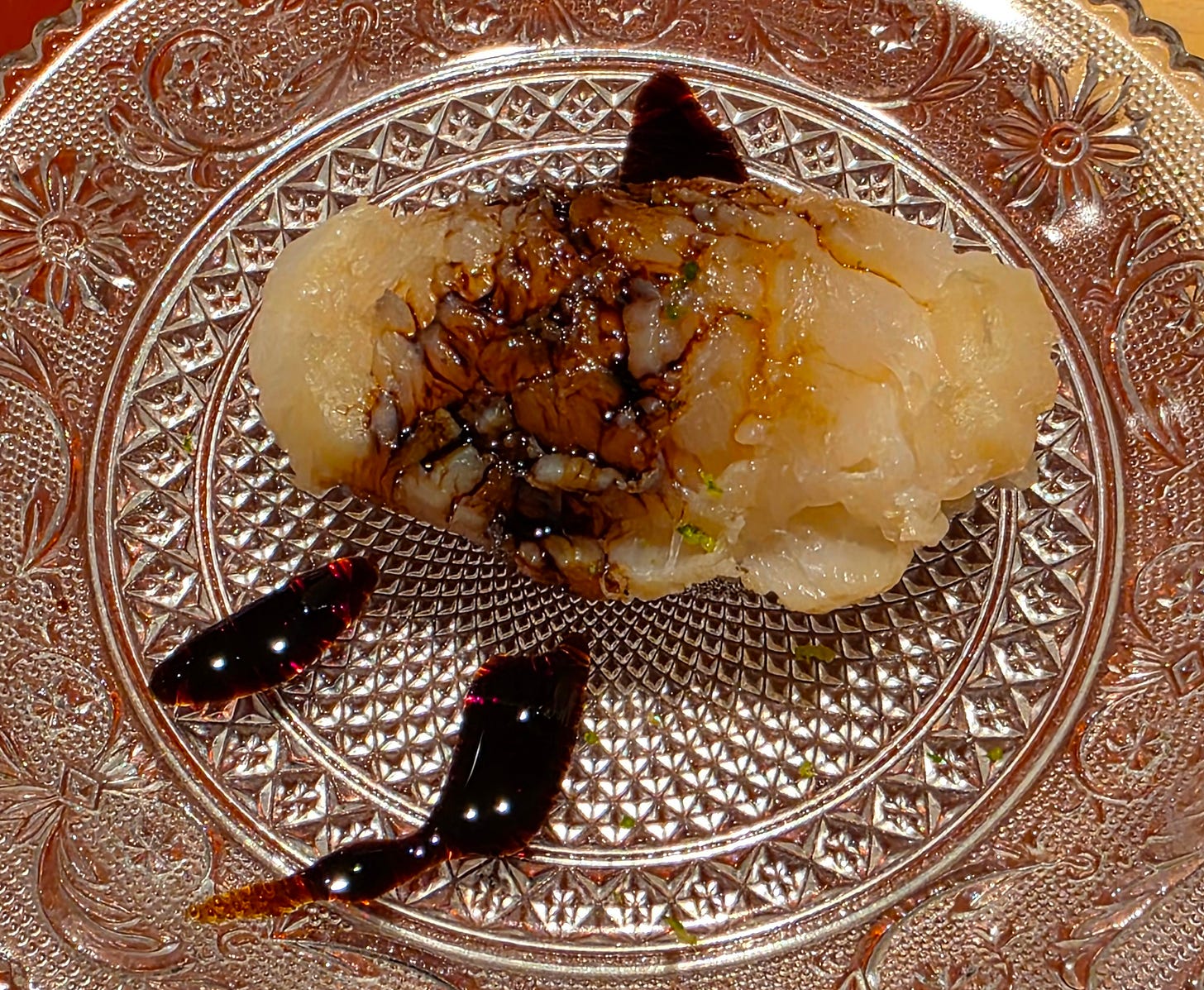
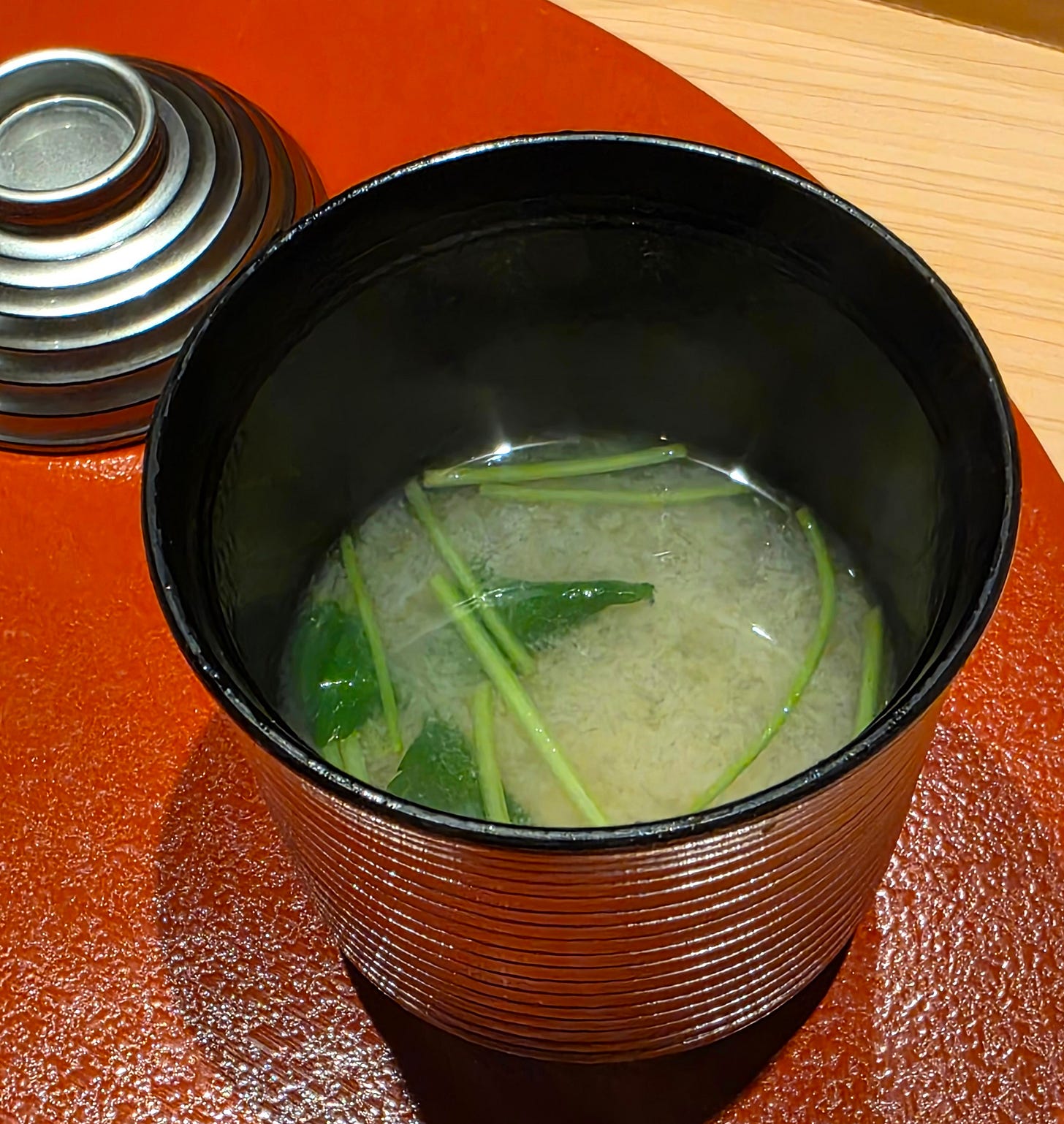


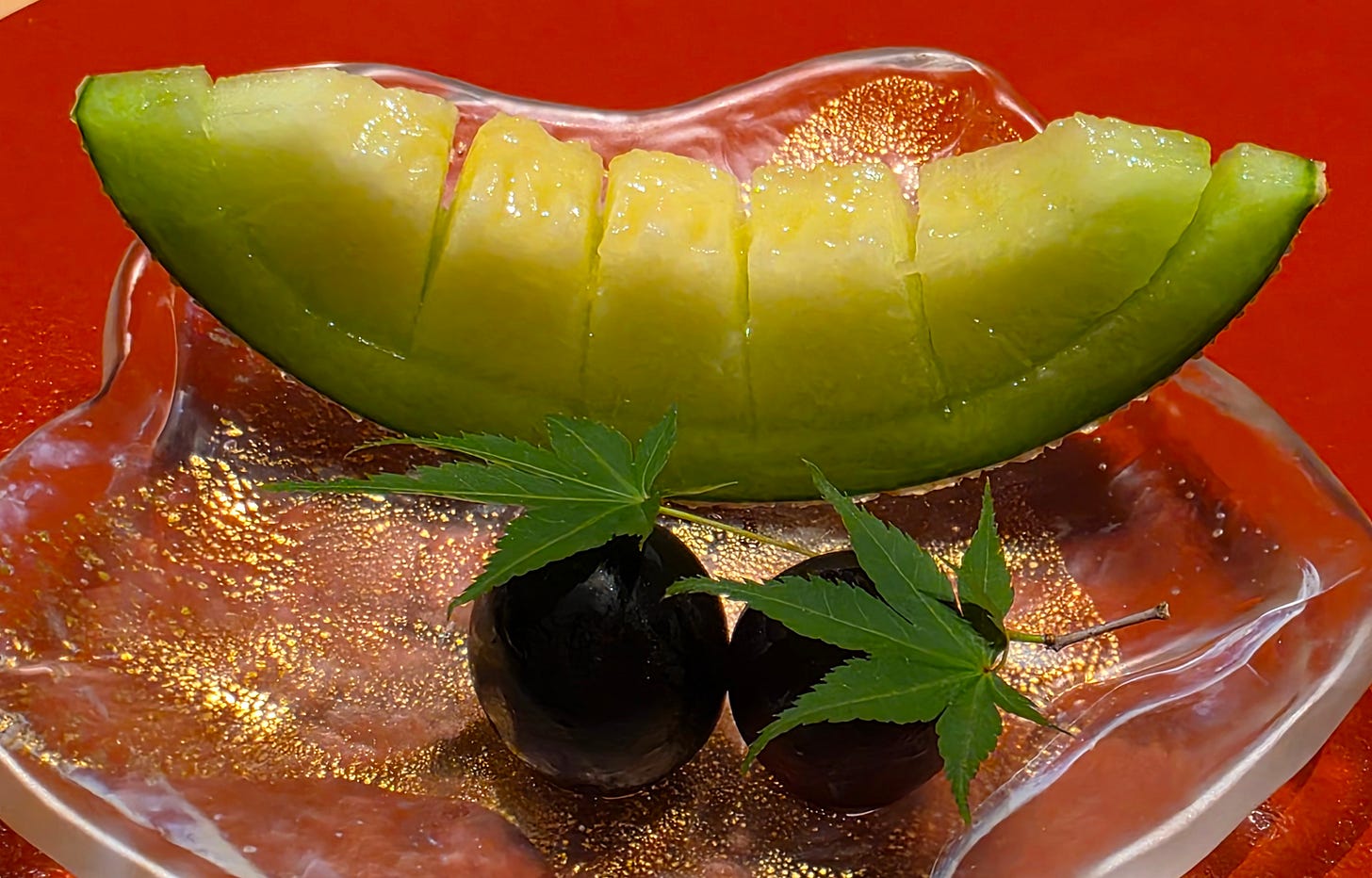
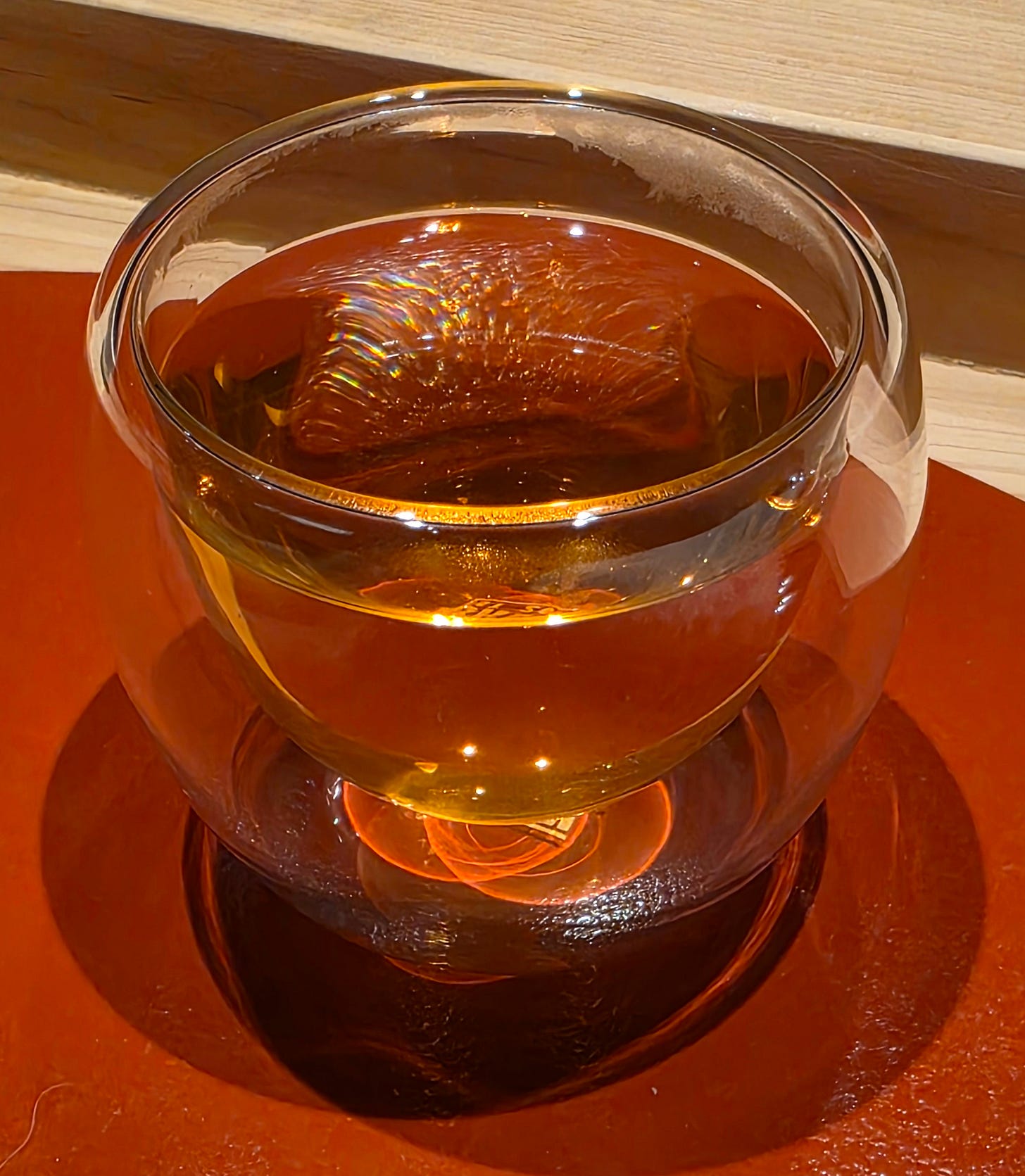
Love this! Reminds me of the Prawns with Fiori Di Sale recipe I adapted from hit NYC restaurant Il Buco for easy home cooking! check it out:
https://thesecretingredient.substack.com/p/get-il-bucos-recipe-prawns-with-fiori
Absolutely incredible.
So, how would you describe the flavor of the fruit tomato?